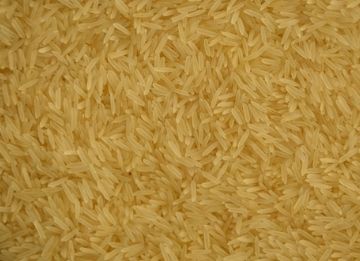Introduction to Basmati Rice
The long-grain rice variety known as basmati is very tasty and aromatic. It is indigenous to the Indian subcontinent and is primarily grown in the northern state of India, some regions of Nepal, and Pakistan. It’s common to compare the flavor and delicate fragrance of basmati rice to that of popcorn or jasmine.
Indian, Middle Eastern and Central Asian cuisine frequently employ basmati rice. It frequently goes with stews, curries, and other foods. The long, thin, and non-sticky rice grains are ideal for making pilafs, biryanis, and other cuisines. Additionally, kheer, a rich rice pudding, which is a popular treat, uses basmati rice as one ingredient.
Basmati rice is frequently regarded as a premium rice variety because of its superior quality and distinctive flavor. Additionally, it is a good source of protein, carbs, and important vitamins and minerals like thiamine, niacin, and vitamin B6.
History of Basmati Rice in India
Over 2,000 years of history may be found in basmati rice. The Sanskrit word “basmati,” which means fragrant, is where the word “basmati” comes from. The rich plains of the Indus Valley, which are now in Pakistan, were where basmati rice was first cultivated.
Due to its distinctive flavor and scent, basmati rice became a favorite among royal families throughout the Mughal era in the 16th century. Basmati rice became a standard component of the opulent dinners served by the Mughal rulers, who were renowned for their elaborate feasts.
Basmati rice was mostly grown in the northern Indian states of Punjab, Haryana, and Uttar Pradesh as it developed into a highly valued crop over time. The Western world first encountered basmati rice around the beginning of the 20th century. It became well-liked among chefs and foodies.
India is the world’s largest producer and exporter of basmati rice, which is currently one of the most popular rice kinds worldwide. Additionally, basmati rice has been given Geographical Indication status by the Indian government. GI safeguards it from copying and abuse due to its unique origin and qualities.
Varieties of Basmati Rice in India
There are various different types of basmati rice farmed in India, each with special qualities of its own. Here are a few of the most well-liked basmati rice kinds in India:
1- Pusa Basmati: The Indian Agricultural Research Institute (IARI) created this well-known type of basmati rice. It is renowned for its aromatic flavor and long, slender grains.
2- Taraori Basmati: This is another well-liked basmati rice variety produced in the Indian state of Haryana. It is frequently used in pulao and biryani recipes and has a sweet, nutty flavor.
3- Basmati 370: This ancient kind of basmati rice is distinguished by its long, thin grains and robust scent. Uttar Pradesh is the state where it is primarily farmed.
4- Mahi Sugandha: The Indian Institute of Wheat and Barley Research (IIWBR) created this more recent strain of basmati rice. It has a long, slender grain and a potent scent.
5- Pusa 1121: This well-liked basmati rice variety is distinguished by its extra-long grain and smooth texture. It is frequently used in recipes like pilafs and biryanis.
These are only a few of the several types of basmati rice produced in India. Each kind, which is used in a wide range of Indian recipes, has its own distinct flavor, texture, and perfume.
Benefits of Basmati Rice
Below is a list of some of the health advantages of basmati rice:
1- Rich in carbs: Basmati rice is a good source of carbs, the body’s primary fuel source.
2- Low in Fat: Basmati rice is a healthy alternative for persons aiming to maintain a healthy weight because it is low in fat.
3- Gluten-devoid: Basmati rice is devoid of gluten, making it a suitable choice for those who are celiac disease or are gluten intolerant.
4- High in Fibre: The high fiber content of basmati rice can aid in controlling digestion and preventing constipation.
5- Containing necessary Vitamins and Minerals: Thiamin, niacin, and vitamin B6 are among the necessary vitamins and minerals found in basmati rice. These nutrients are crucial for preserving a sound neurological system.
6- Reduces Risk of Chronic Diseases: Research has found that regularly eating basmati rice can help reduce the risk of developing chronic conditions including diabetes and heart disease.
7- Aromatic Flavour: Basmati rice has a distinct aroma that can improve the flavor of a variety of foods.
How to Choose the Best Basmati Rice
Here are some pointers on how to pick basmati rice of the highest quality:
1- Check for Authenticity: Basmati rice is a rare and expensive form of rice that is only farmed in specific areas of India and Pakistan. To make sure you are purchasing genuine basmati rice, look for rice brands that have received certification from the Basmati Export Development Foundation (BEDF) or the All India Rice Exporters Association (AIREA).
2- Verify the Grain Length: The long, slender grains of basmati rice are well-known for their length. Rice with grains at least 6 mm long should be your preference.
3- Examine the aroma: Basmati rice stands apart from other types of rice due to its distinct aroma. Pick rice with a robust, nutty aroma.
4- Examine the Texture: After cooking, basmati rice shouldn’t cling together and should have a firm texture. Look for broken or contaminated grains in the rice.
5- Verify the Age: Before being supplied to consumers, basmati rice needs to be matured for at least a year. To make sure that the rice you are purchasing has been appropriately aged, look for rice that has the words “aged” or “matured” on the packaging.6- Select the Right Variety: The scent, flavor, and texture of basmati rice vary depending on the variety. Pick the variety that best satisfies your culinary requirements and taste.


